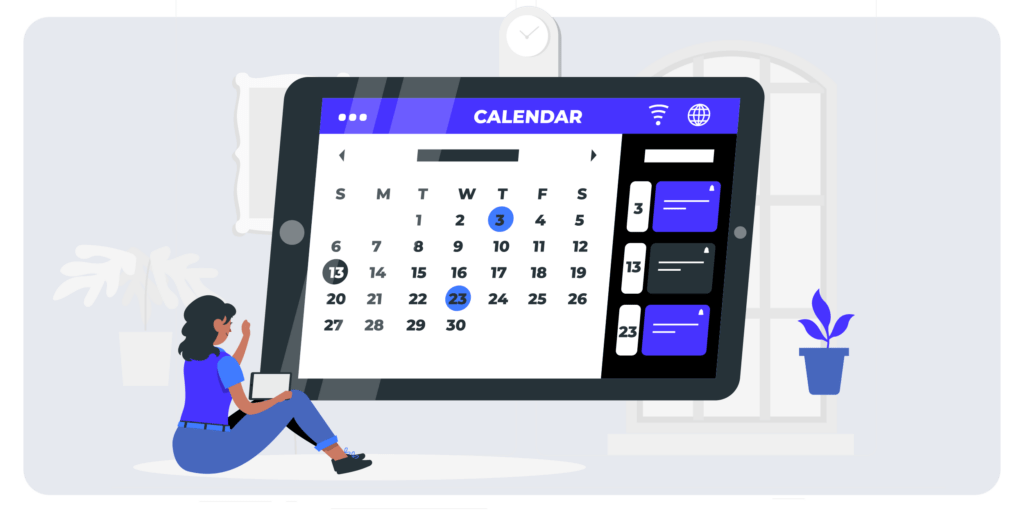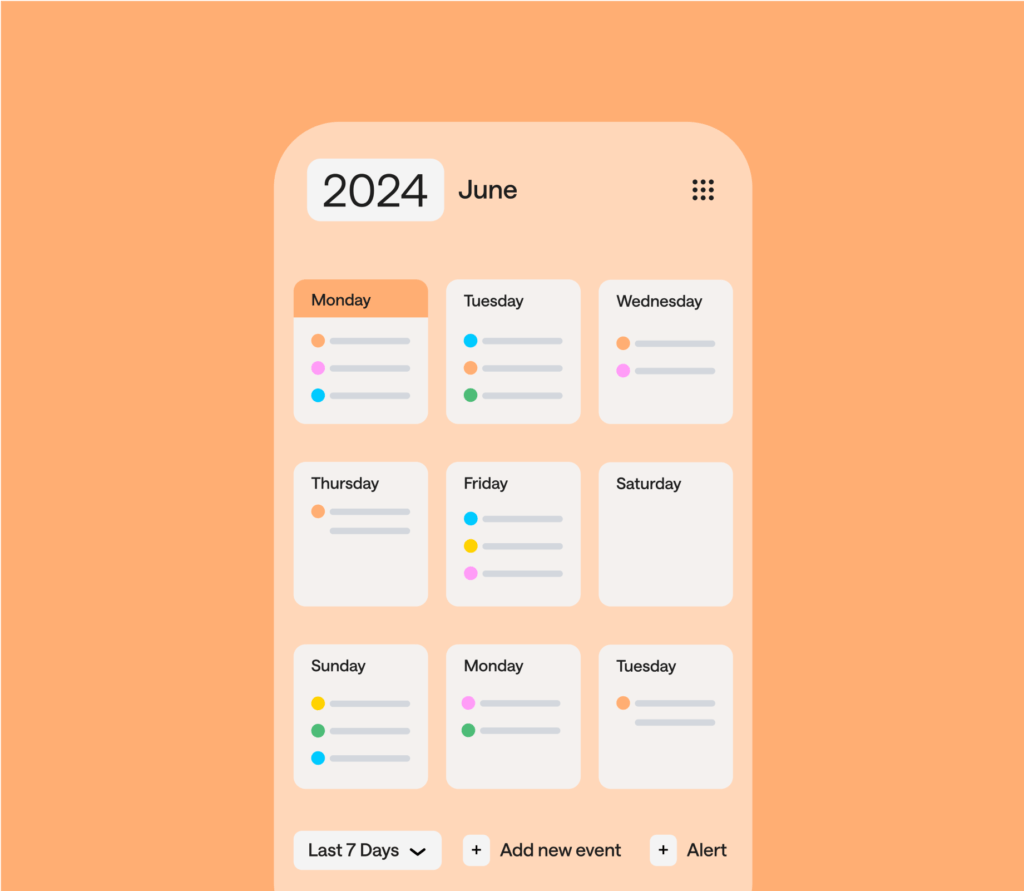
Introduction
In today’s fast-paced digital landscape, maintaining a consistent online presence is crucial for brands and individuals alike. One of the most effective ways to achieve this is through a well-structured content calendar. A content calendar not only helps in planning and organizing content but also plays a pivotal role in ensuring content calendar consistency. In this article, we will explore the concept of a content calendar, its benefits, and how you can build one that promotes consistency in your content marketing efforts.
Table of Contents
What is a Content Calendar?

A content calendar is a strategic tool that outlines what content will be published, when it will be published, and on which platforms. It serves as a roadmap for your content strategy, enabling you to visualize your content flow and ensure that you’re on track to meet your marketing goals. By focusing on content calendar consistency, you can enhance your brand’s visibility and engagement.
The Importance of Content Calendar Consistency
1. Builds Trust and Credibility
Consistency in content creation fosters trust among your audience. When they know they can expect regular updates, they’re more likely to engage with your brand. This is where the importance of a content calendar comes into play. By planning ahead and sticking to your schedule, you reinforce your reliability.
2. Enhances SEO Performance
Search engines favor websites that provide regular, high-quality content. By maintaining a content calendar consistency, you ensure that your site is updated frequently, which can positively impact your SEO rankings. The strategic placement of your focus keyword, “content calendar consistency,” throughout your articles can also improve your search visibility.
3. Improves Efficiency
A content calendar streamlines your content creation process. It allows you to allocate resources efficiently, ensuring that your team is not scrambling at the last minute to produce content. By having a clear plan, you can focus on quality rather than quantity, which is essential for maintaining content calendar consistency.
4. Facilitates Better Collaboration
If you’re working with a team, a content calendar serves as a central hub for collaboration. Everyone can see what content is scheduled, who is responsible for creating it, and when it will be published. This transparency enhances teamwork and accountability, further contributing to content calendar consistency.
Steps to Build a Strong Content Calendar
Step 1: Define Your Goals
Before you start creating your content calendar, it’s essential to define your marketing goals. Are you aiming to increase brand awareness, drive website traffic, or generate leads? Your goals will inform the type of content you produce and how frequently you post, ensuring your content calendar consistency aligns with your overall strategy.
Step 2: Identify Your Target Audience
Understanding your audience is crucial to creating relevant content. Conduct research to identify your audience’s preferences, interests, and pain points. This knowledge will help you create content that resonates with them, driving engagement and ensuring content calendar consistency.
Step 3: Choose Your Content Types
Decide on the types of content you want to produce. This could include blog posts, social media updates, videos, podcasts, or infographics. A diverse mix of content types will keep your audience engaged and contribute to content calendar consistency.
Step 4: Select Your Publishing Frequency
Determine how often you’ll publish content. This could be daily, weekly, or monthly, depending on your resources and goals. The key is to choose a frequency that you can maintain consistently. For instance, if you can only manage one blog post a week, stick to that schedule to ensure content calendar consistency.
Step 5: Create a Template
Having a content calendar template can simplify the planning process. You can use tools like Google Sheets, Trello, or dedicated content calendar software to create your template. Include columns for the content title, type, publication date, responsible team member, and any relevant notes. This structure will help you stay organized and ensure content calendar consistency.
Step 6: Plan Your Content
Begin filling in your content calendar with planned topics and publication dates. Make sure to incorporate your focus keyword, “content calendar consistency,” naturally into your content ideas. Planning ahead allows you to think strategically about your content and ensures that you’re covering relevant topics for your audience.
Step 7: Review and Adjust
A content calendar is not set in stone. Regularly review your calendar to assess what’s working and what’s not. This flexibility is essential for maintaining content calendar consistency. If certain content types or topics are performing better than others, adjust your calendar accordingly.
Tips for Maintaining Content Calendar Consistency
- Set Reminders: Use calendar alerts to remind you of upcoming deadlines. This will help you stay on track and avoid last-minute scrambles.
- Repurpose Content: If you’re struggling to come up with new ideas, consider repurposing existing content. Transforming a blog post into a video or infographic can save time while maintaining content calendar consistency.
- Engage with Your Audience: Pay attention to audience feedback and engagement metrics. This data can guide your content creation and help you maintain relevance and consistency.
- Stay Informed: Keep up with industry trends and news. This knowledge will enable you to create timely content that resonates with your audience and enhances content calendar consistency.
- Utilize Tools: Leverage tools like Hootsuite, Buffer, or CoSchedule to schedule your content in advance. These platforms can help you maintain a consistent posting schedule across multiple channels.
Frequently Asked Questions (FAQs)
1. What is a content calendar?
A content calendar is a planning tool that outlines what content will be created, when it will be published, and on which platforms. It helps in organizing and scheduling content to ensure consistency.
2. Why is content calendar consistency important?
Content calendar consistency is crucial for maintaining audience engagement, improving brand trust, and enhancing SEO performance. Regular content updates keep your audience informed and interested.
3. How often should I update my content calendar?
You should update your content calendar regularly, typically on a monthly or quarterly basis. However, it’s essential to review it weekly to make necessary adjustments based on performance and engagement.
4. What types of content should I include in my calendar?
Your content calendar can include blog posts, social media updates, videos, infographics, podcasts, newsletters, and any other relevant content types that align with your audience’s interests.
5. How do I determine my content publishing frequency?
Your publishing frequency should be based on your resources, audience preferences, and content goals. Assess what you can realistically maintain, whether it’s daily, weekly, or monthly.
6. What tools can I use to create a content calendar?
There are numerous tools available, including Google Sheets, Trello, Asana, CoSchedule, and Airtable. Choose one that fits your team’s needs and workflow.
7. How can I ensure my content is consistent?
To maintain consistency, plan your content in advance, set clear deadlines, and stick to a regular publishing schedule. Regularly review your calendar and adjust as necessary.
8. Can I repurpose content in my calendar?
Absolutely! Repurposing content can save time and resources. You can transform blog posts into videos, create infographics from data, or compile old content into an eBook.
9. How do I engage my audience through my content calendar?
Incorporate audience feedback, respond to comments, and create content that addresses their questions or interests. Engaging with your audience fosters a sense of community and loyalty.
10. What should I do if I run out of content ideas?
Conduct audience surveys, analyze trending topics in your industry, and review previous content performance to identify gaps or new angles. Collaborating with your team can also spark fresh ideas.
11. How do I measure the success of my content calendar?
Track key performance indicators (KPIs) such as engagement rates, website traffic, social shares, and conversion rates. Use analytics tools to assess which content types perform best.
12. What is the ideal length for blog posts in my content calendar?
The ideal length can vary depending on the topic and audience preference. However, research suggests that blog posts between 1,500 and 2,500 words tend to perform well in terms of SEO and engagement.
13. How can I stay organized with multiple content channels?
Create a master content calendar that integrates all your channels, and use color coding or tags to differentiate between content types. This will help you visualize your overall strategy.
14. Should I include seasonal content in my calendar?
Yes! Including seasonal content can help you capitalize on timely trends and events. Plan ahead for holidays, special occasions, and industry-related events to stay relevant.
15. How do I choose the right topics for my content calendar?
Research your audience’s interests, analyze competitors, and utilize keyword research tools to identify trending topics. Consider what questions or pain points your audience may have.
16. Is it necessary to include all content types in my calendar?
No, it’s not necessary to include every content type. Focus on the types that resonate most with your audience and align with your goals. Quality is more important than quantity.
17. What is the difference between a content calendar and a content strategy?
A content calendar is a tactical tool that outlines specific content pieces and their scheduling, while a content strategy is a broader plan that defines your content goals, target audience, and overall messaging.
18. How can I keep my content fresh and engaging?
Experiment with different formats, incorporate storytelling techniques, use visuals, and stay informed about industry trends. Regularly solicit feedback from your audience to understand their preferences.
19. Can I collaborate with my team on the content calendar?
Yes! Collaboration is encouraged. Use shared tools and platforms that allow team members to contribute ideas, track progress, and provide feedback for a more cohesive content strategy.
20. How do I adjust my content calendar based on performance?
Regularly review analytics to assess content performance. If certain topics or formats resonate better, adjust your calendar to focus more on those areas. Be flexible and willing to pivot based on audience feedback.
Conclusion
Building a strong content calendar is essential for achieving content calendar consistency. By following the steps outlined in this article, you can create a robust plan that enhances your online presence and drives engagement. Remember, consistency is key in the digital world, and a well-structured content calendar is your best ally in achieving it. Embrace the process, stay organized, and watch your brand flourish as you maintain a steady stream of valuable content.





